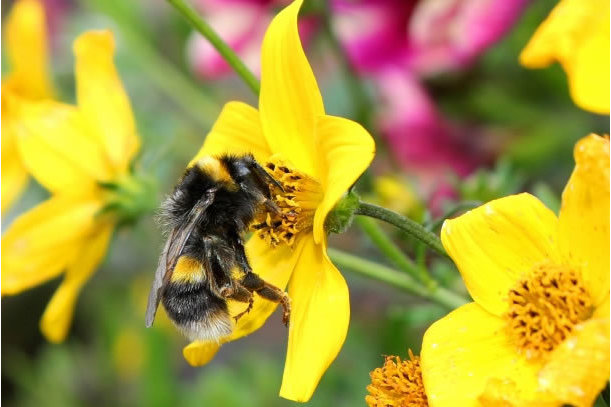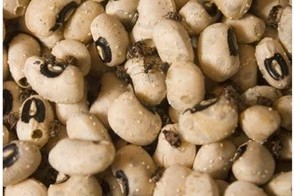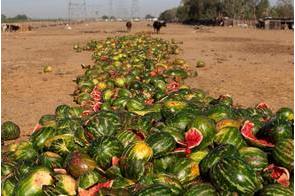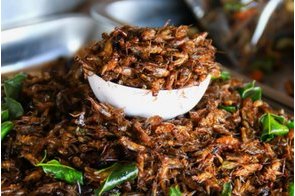Preserving pollinators is imperative for food security

Summary
One way to make sufficient food available without leading to adverse effects on health is to keep pollinators alive.
The Food and Agriculture Organisation (FAO) of the United Nations estimates the world's population will reach 9.1 billion by 2050. This underscores the need to grow more food to feed such a huge population. As nature will have it, humans need the participation of other living organisms to make this happen. Hence, animal pollinators, which include insects (bees, butterflies, wasps, moths and beetles, among others) and birds, are important parts of our ecosystem.
As a child, I remember walking through flowering plants that were grown in pots around my home in Lagos, Nigeria. I would pick some sweet-smelling, edible ones to make juice. Bees and other insects enjoy these flowers too and feed on the nectar – a sweet fluid secreted by flowers. In the process of sucking nectar, they help pollinate plants and make food available.
Pollination is a process that leads to the creation of new seeds, which grow into new plants. Flowering plants have a male part that produces pollens, and a female reproductive part that contains a sticky top called the stigma. For pollination to occur, the pollens must be moved from a stamen – the male reproductive part of a flower – to the stigma, either of the same plant or a different plant. Most plants rely on animal pollinators or the wind, in some cases, to pollinate them.
Based on my work – which involves developing healthy and environment-friendly organic pesticides – with farming communities in Southwest Nigeria, I know that many farmers have reported a disturbing decline in soil nutrients. This could be attributed to the loss of soil organisms arising from the use of synthetic pesticides. As a result, the farmers often have to address the soil-nutrient deficiency by applying chemical fertilizer.
The total land area of the world exceeds 13 billion hectares. According to the FAO, a much smaller fraction – about 1.4 billion hectares – is arable, suitable for crop production. The remaining portions of the global landmass are either toxic, deficient in nutrients required by plants, too wet or too dry, too shallow or too rocky. Some parts are permanently frozen.
The need to feed the world's teeming population has put so much pressure on the available arable land. As plants take up nutrients from the soil, nutrient depletion occurs. More so, loss of fertile top soil due to water or wind erosion, waterlogging, loss of soil organisms, extensive cultivation on marginal land, poor manuring, over-grazing, adverse weather and misuse or excessive use of inorganic fertilizers may accelerate soil degradation.
Chemical fertilizers can also seriously deplete the nutrient content of food. A twelve-year investigation showed that foods grown using chemicals had 16 times the amount of nitrate (carcinogenic concentration), compared to those grown without chemicals (organic). And the National Research Council, an American non-profit organisation, states that six out of seven, and nine out of the top 15, foods with cancer-causing risks come from food with high amounts of nitrates from fertilizers.
According to the World Health Organisation (WHO), approximately 14 million new cases of cancer were recorded in 2012. The number of new cases is expected to rise by 70 per cent over the next two decades. And approximately 70 per cent of cancer deaths worldwide occur in low- and middle-income countries.
In the face of scarce resources, and numerous competing priorities, developing countries will struggle with the healthcare challenges of a growing number of cancer patients if measures are not taken to curb its incidence. One way to make sufficient food available without leading to adverse effects on health is to keep pollinators alive. Pollinators have economic, social and cultural importance. They are very important contributors to food production and nutritional security globally.
An estimated 300,000 species of flowering plants require animal pollinators. More than 70 per cent of the world's top 100 crop species are pollinated by bees. 90 per cent of humans worldwide feed on these food items, which include onion, okra, palm oil, tomato, apple, walnut, avocado, peach, green beans, orchid plant, pear, carrot and grape, among others.
However, the global population of pollinators has declined. One of the reasons for the decline is the widespread use of pesticides to increase food crop production. The United States Environmental Protection Agency (EPA) indicated that Colony Collapse Disorder (CDC), which causes sudden loss of worker bees from hives, may be caused by pesticides, pathogens, parasites and poor nutrition. Pesticides have also affected soil microorganisms.
But unfortunately, neither famers nor policymakers in developing countries have shown much concern about the adverse effects of chemicals on soil organisms and pollinators.
Pesticides differ in the ways they affect bees and other pollinators. For example, contact pesticides sprayed on plants can kill pollinators such as bees and butterflies when they land on the surface of treated plants. Meanwhile, systemic pesticides added into the soil or onto seeds can move up into the stem, leaves, nectar and pollens of plants. Most pesticides are not pollinator-friendly. Soil insects such as ground beetles get killed by direct contact with pesticides. Other flying pollinator insects and birds die through exposure to pesticide-contaminated fruits, pollen grains, nectar or leaves.
Millions of livelihoods and hundreds of billions of dollars' worth of food supplies is threatened as the population of pollinator species decreases drastically. By implication, this means important dietary sources of vitamins and minerals, such as fruits, vegetables, nuts, seeds and oils – which are often products of pollination – are at risk of being scarce.
In Southeast Asia, up to 50 per cent of the production of plant-derived vitamin A requires pollination. Pumpkin and mango are among top crops for vitamin A production in many pollination-dependent countries. More so, okra in India and Thailand, Sour cherry and apricot in Iran, plum in Romania, peach in Mexico are important pollinator-dependent sources of vitamin A.
However, other essential micronutrients such as iron and folate have varying levels of dependence on pollinators across Africa, Central America and Asia.
A recent study by Rebecca Chaplin-Kramer, Lead Scientist at the Natural Capital Project of Stanford University, shows that Vitamin A deficiency is nearly three times likely to occur in regions that are highly dependent on pollinators. These countries include Southeast Asia, India, Central and Southern Africa. Meanwhile USA, Europe, China and Japan are places that have received the greatest economic value from pollination services. Hence, both developed and developing countries benefit one way or another from pollinators.
There are food crops, including fruits and vegetables, that do not solely depend on animal pollinators. For instance, carrot, sweet potatoes, lettuce, spinach are pollinator-independent crops, although they all require some form of pollination for seed production. This suggests that reduction in pollination can still affect propagation of these crops.
Instead of the currently used chemical approach to crop production, developing countries should encourage organic farming. Another way to be more creative is to have national treatment facility where domestic sewage could be treated and recycled into nutrient-rich organic materials known as biosolids. These could be made available to farmers to boost soil nutrient and stimulate plant growth, in addition to green and compost manure.
With this approach, the risk to killing pollinators as a result of exposure to chemicals could be greatly reduced.
A two-year study conducted and released by the International Science-Policy Platform on Biodiversity and Ecosystem Services (IPBES), the Germany-based intergovernmental body which assesses the state of biodiversity, highlights ways to effectively safeguard the declining population of pollinators, which are imperilled mostly by neonicotinoid pesticide use, diseases and pests, and climate change. Specific steps to secure pollinators include reducing exposure of pollinators to pesticides by limiting their usage, seeking alternative forms of pest control, and adopting a range of application practices and technologies to reduce pesticide drift or the unintentional diffusion of pesticides.
Education and exchange of knowledge among farmers, scientists, industries, communities and the general public should be prioritized. These include supporting traditional practices such as crop rotation and planting of cover crops. There should be a combination of scientific knowledge with indigenous practices. If our desire is to make sufficient nutritious food available, we should be looking towards preserving the pollinators and promoting non-harmful approaches to pest control. The lesser the chemicals involved in food production, the higher the tendency to feed and nourish our teeming population.
Financial Nigeria Columnist, Mojisola Ojebode, is a Nigerian biochemist and the founder and product developer at Moepelorse Bio Resources. She is also a Global Innovation Through Science and Technology (GIST) awardee, and an Aspen New Voices fellow.
Related
-
Addressing pesticide food poisoning in Nigeria
A prominent setback for the commercialisation and commoditisation of bio-pesticide products, especially in developing ...
-
Food security in Nigeria and the world by 2050 II
Despite the support from international organisations to drastically reduce food losses and wastage in developing countries, ...
-
Edible insects as sustainable alternatives to livestock products
A paradigm shift from livestock to insects will go a long way to limit the impacts of climate change globally. The less ...










